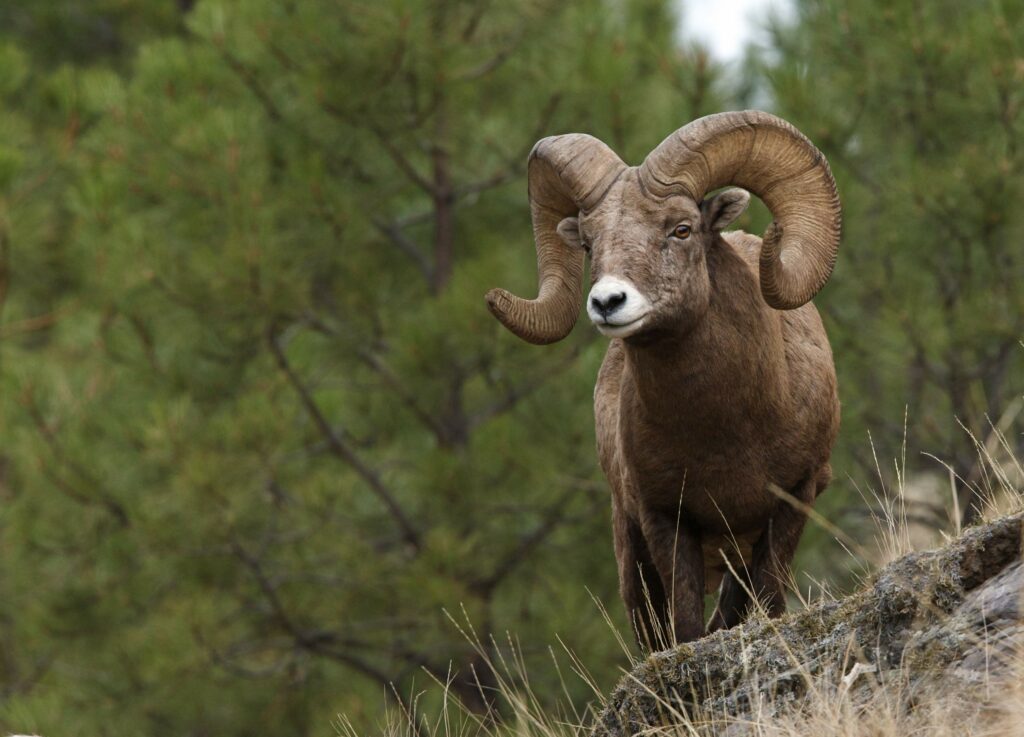 Bighorn sheep are found high up in the Rocky Mountains. Colorado has the largest population which is quite possibly why the bighorn sheep are the official mammal of the state. The rocky, rough terrain isn’t problematic as the sheep are well equipped. Their bowl-shaped cloven hooves have thick, tough soles with sharp edges providing traction against both hard and soft surfaces. The natural muscle development is enhanced by the strenuous exercise required to navigate mountainous regions.
Bighorn sheep are found high up in the Rocky Mountains. Colorado has the largest population which is quite possibly why the bighorn sheep are the official mammal of the state. The rocky, rough terrain isn’t problematic as the sheep are well equipped. Their bowl-shaped cloven hooves have thick, tough soles with sharp edges providing traction against both hard and soft surfaces. The natural muscle development is enhanced by the strenuous exercise required to navigate mountainous regions.
None of this means they will not find one territory and stay within its confines. During winter months, a heard often seeks sunlit areas on a mountains south side. These areas are great for wild grass and short shrubbery. Like cows, bighorn sheep do regurgitate their food prior to final digestion. They don’t always get much rest and may have to digest on the go. Without a heard, the sheep prey for mountain lions and coyotes. The rams and ewes are usually separate from one another (other than mating season) but they remain in the same social circles. In the U.S., mating season starts around late fall extending to early winter. The gestation period is a little over five months – usually April through July. The lambs are delivered in hard to reach, high altitude areas, no doubt for protection from predators. But what starts the dance for love you ask?
The males curl their lips to heighten their ability to smell the nearby ewes. Naturally, rams flex their muscles, take swipes at other males, and enhance their postures to showcase their strength and status. Then follow the violent battling between the males. At around 20 mph, rams collide headlong into one another and jab their curled horns into one another. A typical male bighorn is about six feet long and could easily weight 200 – 250 lbs. This explains the thunderous crash heard when the rams charge. However, with skull bones that are double layers and neck ligaments that absorb the shock and impact, this doesn’t kill or even injure the rams. But the point of the battle isn’t to kill but to get access to a ewe. The most damage done is to the horns, which keep growing through the wild sheep’s lives. Dents and fractures in the horns are indicative of prior fights.
The curling of the horns takes years. The range is about five to ten years. Oddly enough, the horns outweigh the head at upwards of twenty pounds. Some wildlife official note that the horns have reached thirty pounds which is heavier than the rams bone structure. Now, ewe horns are much smaller and more pointed than the rams. This makes them less dominant than the rams, in particular, the older rams. With being an older ram, thicker pads of muscle and larger horns come into play.
How was that? Anything else you’d like to know about bighorn sheep? Comment below to let me know!

